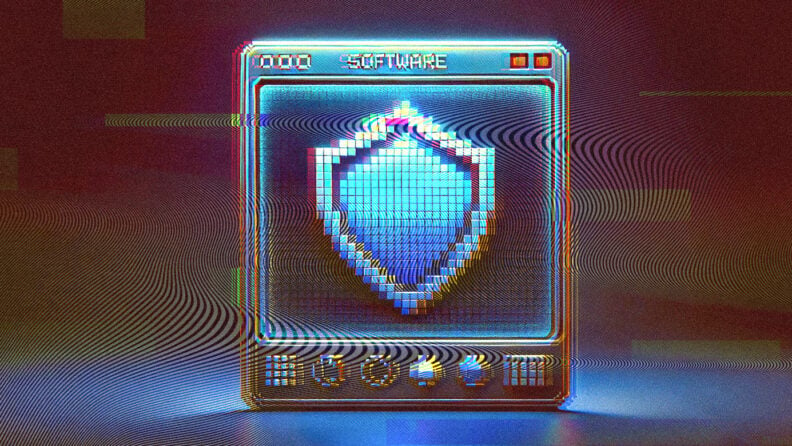In 1987, the US Air Force established the Software Technology Support Center (STSC). Its mission was to "help organizations identify, evaluate, and adopt technologies that improve software product quality, production efficiency, and predictability” (Source). To accomplish this goal, the STSC founded an online publication called CrossTalk: The Journal of Defensive Software Engineering, which it ran from its website (Stsc.hill.af.mil) from 1996 to 2016.
Later, the STSC created the website Crosstalkonline.org where CrossTalk continued to be published. However, since 2017, the site has not been accessible.
What could have happened to it? We attempt to find out by exploring the history of the publication. We then end this article by looking at the 10 most important articles it published.
The History of CrossTalk
CrossTalk started publishing in 1988 to encourage techniques to ensure the development of high-quality software. According to the STSC, the objective of the publication was to “improve the reliability, maintainability, and responsiveness of our war-fighting capability and to instruct, inform, and educate readers on up-to-date policy decisions and new software engineering technologies” (Source).
Under the leadership of Reuel Alder (the publisher), Tracy Stauder (Managing Editor), and Sandi Gaskin (Senior Editor), CrossTalk grew from about 200 subscribers to 29,000 (Source).
Stsc.hill.af.mil, the site where CrossTalk was initially published, was established in December 1996. Earlier volumes can be found here.
Stsc.hill.af.mil included a subscription form, guidelines for prospective writers, and theme announcements. It also contained a page with the contact information of the publication’s full-time staff.
CrossTalk would remain under the STSC website until November 2010 when it moved to its own site: Crosstalkonline.org. The last Issue of CrossTalk captured on the internet is for August 2017.
There is very little information available about what happened to both the website and the publication after August 2017.

Top 10 Most Important Articles Published by CrossTalk
In memory of CrossTalk, we identified 10 of the most important articles it published in its lifetime.
To identify these articles, we focused on the number of links each of the articles received from webmasters and editors. Articles that attract more links (citations) are likely to be more import than articles that attract fewer links.
1. Computer Science Education: Where Are the Software Engineers of Tomorrow?
Academics Robert Dewar and Edmond Schonberg, then both professors of Computer Science at New York University, use this piece to argue that Computer Science education (in 2008) neglected necessary skills.
The authors blame the general adoption of “Java as a first programming language” for this situation. They provided a summary of the skills they believe must form the stock-in-trade of every software professional: programming languages, test management tools for building large scale trustworthy programs, and formal proof methodologies (source).
2. Scaling Agile Development: Large and Multisite Product Development with Large-Scale Scrum
Consultants Craig Larman and Bas Vodde used this article, written in 2013, to summarize the contents of their two-volume book series on very large-scale agile development. They described how they have worked with clients to introduce two large-scale Scrum frameworks to large global groups. Examples of companies they worked with include the Bank of America and Erickson, the telecom-infrastructure-equipment provider.
Larman and Vodde report that their experiences led them to publish two volumes. Volume 1 is Thinking and Organizational Tools for Large-Scale Scrum. It focuses on leadership and organizational design. The second volume is Practices for Scaling Lean & Agile Development: Large, Multisite & Offshore Product Development with Large-Scale Scrum. It delivers practical suggestions for scaling in various circumstances.
3. Using both Incremental and Iterative Development
The author of this 2008 article, Dr. Alistair Cockburn (described by CrossTalk as an expert on object-oriented (OO) design, software development methodologies, use cases, and project management) focuses on incremental development and iterative development in the area of software.
Dr. Cockburn identifies challenges met by teams when dealing with the incremental development and iterative development: trying to manage them in the same way or thinking that when one is used, the other should not. He ends by summarizing his ideas: "The word increment means add onto; the word iterate means redo” (Source).
4. SmartCam3D Provides New Levels of Situation Awareness
In this 2005 piece, Janis White (a statistical consultant), Frank Delgado (working for NASA), and Mike Abernathy (a software specialist) focus on the SmartCam3D (SC3D). This is a “hybrid synthetic vision system that combines live sensor information with data from a synthetic vision system to create a virtual cockpit window.”
The authors introduce the hybrid synthetic vision system (HSVS). This is a system they describe as the combining of “live sensor data with information from a synthetic vision system (SVS) to create real-time, information-rich visuals.” They conclude by saying that the SC3D was the inaugural real-time HSVS system, suggesting that “this software will save lives” (Source).
5. CMMI Supports Enterprise-Wide Process Improvement
Lt. Col Joe Jarzombek, then working as a director at Earth Science Information Partners (ESIP), a community working to make scientific data more accessible, used this piece to introduce the idea of Capability Maturity Models (CMMs). This refers to sets of models dealing with organizational procedures and competencies cutting across disciplines.
Jarzombek introduces the idea of CCMI teams, denoting a "collaborative effort to integrate CMMs." Such units, he argues, would create a set of incorporated products that support process and product improvement in the software development space (Source).
6. Why Big Software Projects Fail: The 12 Key Questions
In this 2005 article produced by Watts S. Humphrey of the Software Engineering Institute (SEISM) of Carnegie Mellon University, the focus is on the 12 critical questions about why big software projects fail.
For Humphrey, answers to the questions he poses in the article will assist software developers in improving their projects. He believes that the main issues are linked to the reasons why it is often a challenge to manage large software projects, the type of management systems required, and what needs to be done when implementing these systems (Source).
7. Demystifying Cloud Computing
Reflecting on the developments that were taking place in 2011 in software development, Qusay F. Hassan of the Faculty of Computers and Information department at Egypt’s Mansoura University focuses on cloud computing.
In the article, he attempts to deal with the idea that the term “cloud computing” is often abused by people when they refer to things that may not relate to its actual definition and scope. Is it all about web hosting? He asks. He then goes on to define several concepts such as Web Hosting, Application Service Provider (ASP), Volunteer Computing, and Online File Sharing among a host of others (Source).
8. Correctness by Construction: A Manifesto for High-Integrity Software
“High-integrity software systems are often so large that conventional development processes cannot get anywhere near achieving tolerable defect rates," say Martin Croxford and Dr. Roderick Chapman at the beginning of this piece. When the two authors wrote this piece, they were working for Praxis High Integrity Systems, a British systems engineering company specializing in mission-critical systems (Source).
In this 2005 article, the writers promise to deliver an approach that has produced "software with very low defect rates cost-effectively." The method they write about is the Correctness by Construction (CbyC). This is an approach to software development that adapts well to change throughout its life and whose defect rates were lower than the then commercial practices (Source).
9. Browser User Interface Design Flaws: Exploiting User Ignorance
This article was authored by Aditya Sood, then a Ph.D. candidate at Michigan State University, and Richard Enbody, an Associate Professor in the Department of Computer Science and Engineering, also at Michigan State University, in 2011. In the article’s abstract, the authors note that the “design flaws in browsers pose serious threats to user security, privacy, and integrity.”
The piece focuses on design faults in the Graphical User Interface (GUI)
Components of browsers. The authors suggest that these are the flaws that fraudsters take advantage of when they trick users into doing things that compromise their safety (Source).
10. Geriatric Issues of Aging Software
Capers Jones, then working in software productivity research, focuses on issues linked to aging software in business and the public sector. In this 2007 piece, Jones reports that it was not surprising then to find entities using software that is more than 10 years old, with applications as old as 25 years.
Jones also deals with the consequences of the aging software, noting that it becomes difficult to maintain such software because updates often destroy the initial structure of the applications. This increases the entropy (lack of predictability and order). He notes that as software ages, a problem called fix injection leads to “new defects (getting) accidentally introduced as a byproduct of fixing previous defects” (Source).


